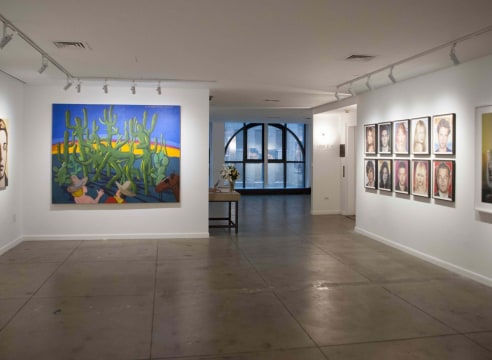
Jean Dubuffet was born on July 31, 1901, in Le Havre, France. In 1918 he moved to Paris to study at the Académie Julian, which he left after six months. During this time, Dubuffet met Raoul Dufy, Max Jacob, Fernand Léger, and Suzanne Valadon and became fascinated with Hans Prinzhorn's book on psychopathic art.
He traveled to Italy in 1923 and South America in 1924. Then Dubuffet gave up painting for about ten years but committed himself to becoming an artist in 1942.
Dubuffet's first solo exhibition was held at the Galerie René Drouin, Paris, in 1944; the Pierre Matisse Gallery gave him his first solo show in New York in 1947. During the 1940s, the artist associated with André Breton, Georges Limbour, Jean Paulhan, and Charles Ratton, and his style and subject matter owed a debt to Paul Klee.
From 1951 to 1952, Dubuffet lived in New York. He then returned to Paris, where a retrospective of his work took place at the Cercle Volney in 1954. His first museum retrospective occurred in 1957 at the Schlo Morsbroich (now Museum Morsbroich), Leverkusen, West Germany. Dubuffet exhibitions were subsequently held at the Musée des arts décoratifs, Paris (1960–61); Museum of Modern Art, New York, and Art Institute of Chicago (1962); Palazzo Grassi, Venice (1964); Tate Gallery, London, and Stedelijk Museum, Amsterdam (1966); and Guggenheim Museum (1966–67).
Dubuffet died on May 12, 1985, in Paris.